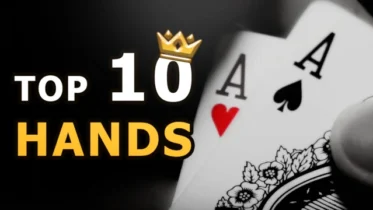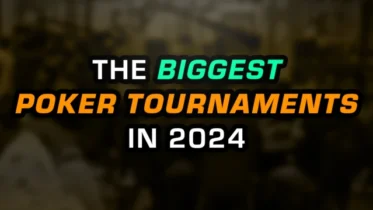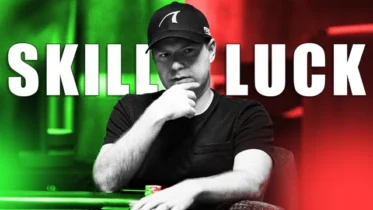Vanilla ice cream is a fine thing. Why, some people go their whole lives choosing that flavor at every opportunity, despite dozens – perhaps hundreds – of other options. I presume the subset of vanilla-lovers who are poker players are also perfectly content to play no-limit hold’em for each and every hand of poker in which they participate. NLHE is a great game – I can play it for hours and consider my time well-spent. But I like some diversity in both my ice cream and my poker. I’m all for anything that will throw spice and flavor into my experience. So when I first heard about Double Board PLO Bomb Pots, I thought, “Two scoops, please.”
Yes, “Double Board PLO Bomb Pot” (or “DBPLOBP”) does sound like a confection from the people at Ben and Jerry’s, but in fact, it’s a kind of poker game. DBPLOBPs have taken off in the last year or so. I first became aware of them when I saw them at The Lodge in Austin, Texas. But they started appearing on some live-streamed games, so, like anything Internet, the entire planet discovered this new and interesting twist on flop-turn-river.
It has become quite popular as an intermittent firecracker thrown into a regular NLHE game. And, at both The Lodge and the WSOP, I saw tables that were nothing but DBPLOBPs.
The basics of double board PLO Bomb Pots
If you’re already a regular DBPLOBP player, you can probably skip this part. Otherwise read on…
It’s a bomb pot, which means there is no preflop betting. Each player puts in an ante (generally 3-5 big blinds) and the dealer goes straight to the flop. So the pot is already 24-45 big blinds – a huge pot is brewing and we haven’t seen the flop(s) yet.
It’s double board. That is, there are two flops, two turns, and two rivers. So the flops look like this:
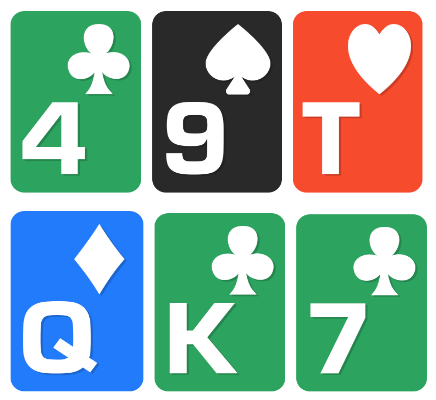
When the dealer goes “straight to the flop,” it’s really straight to the flops – two of them. At that point, the action begins with the person in the small blind position, and things proceed “normally.” Assuming action proceeds past the flop, there will be two turn cards, and two river cards.
If there is a showdown, then the pot is split between the winner of Board 1 and the winner of Board 2. Of course, if there is no showdown, then the last bettor/raiser wins the entire pot. If one player is fortunate enough to win both boards, they win the entire pot (this is foreshadowing).
Finally, it’s PLO – Pot Limit Omaha. If you’re not familiar with this four-card poker game, here’s a good PLO tutorial.
It’s quite possible that you’ve played a DBPLOBP or two. If you haven’t, it probably won’t be long before you do. There’s good news and bad news…
Good news: DBPLOBPs are exciting, fun, and can be wildly profitable.
Bad news: DBPLOBPs can dust off your stack faster than you can say “second nuts.”
With that, I present three techniques to ensure that you find them fun and profitable.

Read one of the highest regarded articles on the PokerCoaching.com blog: The Bankroll Bible
PLO Tip #1: Understand that an army of cards is massed against you
Let’s do some basic combinatorics. Assume you’re dealt into a 9-handed DBPLOPB. Each of your eight opponents has four cards. Each of those four cards has six two-card combinations they can play. Because there is no preflop folding,
48 two-card combinations see the flops. If you don’t have the nuts, you have nothing.
Paired board means full houses
If there is a pair on one of the boards, it is probable that both other cards of that rank are in somebody’s hand. For example, let’s say that one board is 9♣-4♦-4♣. You should assume that two other players are looking at a 4 (unless somebody is looking at quads). Each of those players has three side cards. If one of those players has a 9, they already have a full house. Furthermore, either the turn or river could hit either of the players’ side cards. The conclusion: do not draw to a flush, even the nut flush, on a paired board. Also, if you are looking at a 4, trips are unlikely to win on that board when all is said and done – you will need a full house.
Of course, we can’t cover all the possible situations to consider, but keep this single point in mind:
The more opponents that continue on the flop, the more totally nutted your hand must be.
Consider folding the nuts on the flop
Any veteran PLO player can tell you that the winning hand, on average, will be much closer to the nuts than it is in hold’em. The bomb pot nature of this game amplifies this effect. For instance, it’s quite possible that you flop the nuts on one board, but need to fold to significant action. Suppose you have 8♥8♠A♦K♣, and one of the boards is 8♦-5♣-2♣. You have no interaction with the other board. Congratulations – you have the current nuts on this board. But there is only a tiny chance that your set of 8’s will be the best by the river, and you’re chasing after half the pot. If there’s any significant action, you should fold. If you can see a turn card cheaply, do so, because a five, deuce, or eight would give you a monster worth playing for stacks.
You often hear people talk about “the effective nuts,” or “nutted hands” in no-limit hold’em. Forget those concepts in DBPLOBP – you are interested in the literal nuts.
Consider this situation where you flop the nut straight. You have T♥9♠4♠2♦. One of the boards is 8♣-J♣-Q♠, and again, you have no interaction with the other board. This is even worse than the top set scenario. First, you are already chopping this board with anybody else who has a ten-nine combination. Also, unlike the set of 8’s, you can’t improve – this is as good as your hand can get.
It’s even worse because you have no clubs in your hand. It’s not that drawing at a non-nut club flush will help you (somebody will have a better one), but that clubs you hold block the nut flush from getting there. Blockers are much more important in four-card than two-card games.
Flopping the nut straight on one board with no significant redraw, and no second board interaction, is “whiffing” in DBPLOBPs.
Even full houses are vulnerable
I always find it terrifying to flop an under-full in a DBPLOBP. Let’s say you have 5♣5♦8♠9♥, and one board is 5♦-T♣-T♥. Remember what we said about trips filling up. Of course, you’ve made it more difficult for those trips to fill up because you’re holding two fives. Certainly, quad tens is a possibility, and if you play enough DBPLOBPs, that will happen to you. But even if that particular monster isn’t actually under the bed, you are far from home free – it’s extremely likely that both tens are in two separate hands. That’s six cards one of them can hit to over-full you. Assuming, again, that the dreaded T-5 combination isn’t already out there. And remember, this is a bomb pot – nobody had to worry about how disconnected and disorganized their four cards were. T-5 is just as likely as A-K.
Strength is relative
When navigating DBPLOBPs, you must abandon both your hold’em hand value sensibilities, and even your PLO hand value sensibilities.
In a DBPLOBP, if you’re not looking at the nuts, somebody else probably is.
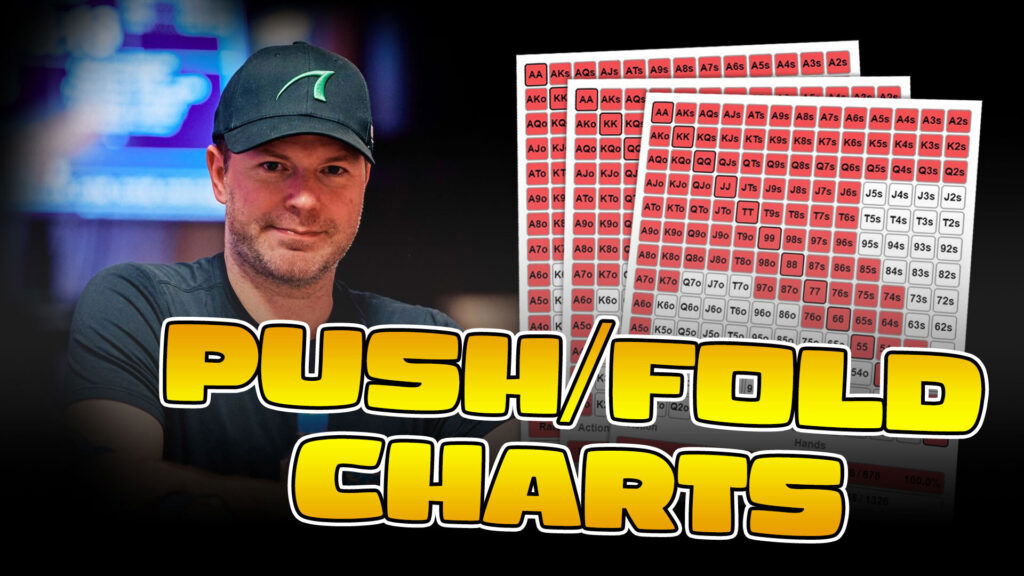
Make the best preflop decisions with Jonathan Little’s Push/Fold Charts!
Stretch your legs – More Content on PLO Bomb Pots To Come!
That’s a lot of material that may be new to you. Take a break, maybe even watch a few of these pots on your favorite live stream, and see if you can spot the mistakes the players are making (there are plenty). We’ll be back soon with the second scoop of this ice cream cone.

